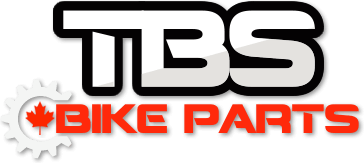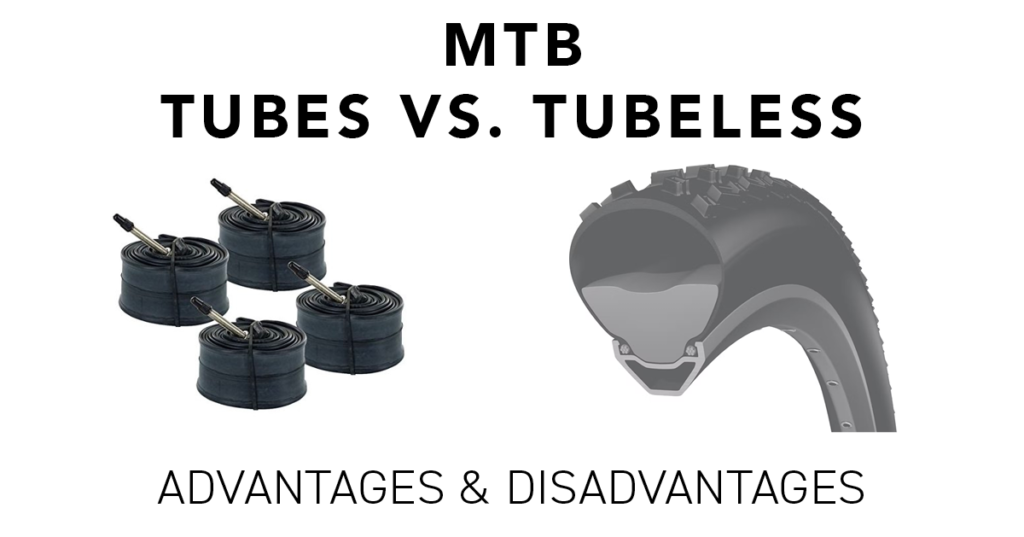MTB Tubes vs. Tubeless. Ever since the option to run tubeless mountain bike tires came around there has been a constant debate as to what is better. The following article is going to look at some of the advantages and disadvantages of running a tube or going tubeless on a mountain bike.
Inner tubes have been around for a long time and are fairly self explanatory. It is essentially a pliable rubber tube that is filled with air and sits underneath the tire. If the tube gets punctured or pinched, the inner tube may deflate and you will need to replace it with a new one.
So how do tubeless tires work? A tubeless tire is designed to have the tire and rim perfectly sealed to keep the tire from going flat. There is usually tire sealant that is added to help plug any air leaks and there are two options when running a tubeless setup: use tubeless ready tires and rims, or use a tubeless conversion kit.
Tube Advantages
Running tubes is cheaper. Tubes are compatible with all rims and tires and don’t require any new parts. A good tube is cheap and a patch kit is usually less than $5. Tire levers, allen keys, and mini pumps are all very affordable. That’s all you need and you will be good to go.
Tubes are faster and easier to setup. If you get really good at it you can install a new tube in just a few minutes. No need to deal with sealant as well. It can sometimes be difficult to put the tire on the rim, but with practice and a bit of elbow grease the install is very easy.
Tube repair kits are small and lightweight. As mentioned above all you need is a tube, patch kit, tire levers, (sometimes) allen keys, and a mini pump. All of these items don’t take up much space and are lightweight compared to the items you need if you were running tubeless.
Patching a tube is easy. It is a simple process that doesn’t take much time. If you need to patch up a tubeless tire it is a more tedious and time consuming task.
All tires and rims are designed to use tubes. Even if they are designed to be tubeless compatible, tubes will still work.
Tube Disadvantages
You will get a lot more flats. This is by far the biggest issue with tubes. It’s easy to get a flat. Thorns, glass, rocks & roots (pichflats), nails, and so much more can cause a tube to go flat.
You can’t run tires at a low pressure. To avoid the risk of getting a pinch flat, you will need to make sure your PSI is high enough that this is unlikely to happen. You will have to run your tires at around 10 PSI higher than if you were running tubeless, which results in less traction from the tire. Less tire tread will contact the ground from the increased pressure, resulting in lower traction.
You will generally ride slower with tubes and your handling won’t be as good. Since you will have less traction because of the increased PSI you can’t take turns as fast, and risk washing out on corners. This also means you can’t climb as fast since your rear tire will wash out easier with less traction.
Tubeless Advantages
You will get fewer flats and this is typically the #1 reason why people will run tubeless. Tubeless tires will repair themselves if there is a puncture as the tire sealant inside the tire will fill the holes and seal it again before the air escapes.
Tubeless tires offer better traction. Since you don’t have to worry about pinch flats you can often run tubeless tires at a lower PSI. More of the tires tread will contact the ground from the reduced pressure. This improves traction, helps corner better and is helpful when riding in loose or slippery conditions.
Tubeless makes you faster and allows you to maintain more momentum. Since you have better traction you can corner faster without washing out and climb up steep hills faster without spinning out. The lower tire pressure helps maintain more momentum since the tire will deform to an obstacle rather than bounce off. This will help keep the wheel rolling faster instead of slowing it down.
Most tires and wheels can be setup tubeless. If your tires and wheels are not already tubeless ready you can almost always use a tubeless conversion kit, so no need to buy new parts.
Flats are typically easy to repair. Most punctures and tears can be fixed without having to remove the tire from the rim. Tubeless tire plugs can fix most punctures and tears. If you have a puncture that is too big for a tire plug and all else fails, you can still use a tube temporarily to help you get home.
Easy to switch back to tubes. If you decide to try a tubeless setup and for whatever reason you don’t like it, it is easy to switch back to using tubes. You can simply wash out the tire sealant from the tire and put a tube back in.
Tubeless Disadvantages
Running tubeless is more expensive. Tires and wheels that are designed for tubeless are more expensive than those made for tubes. Also if you are unable to use a tubeless conversion kit to convert your existing setup, then you will have to buy new. There are a handful of items that you will need to purchase for a tubeless setup as well, and the costs can add up. Aside from having tubeless ready tires and rims, you will also need to purchase tire sealant, rim tape, tubeless valves, a tubeless patch kit, and a tire sealant injector.
Setting up and mounting tubeless tires takes longer. The process can be quite tedious and can take some trial and error. The hardest part is making sure there is an airtight seal when seating the tire bead onto the rim. You also have to make sure you add the right amount of sealant. Once you have everything in place you have to quickly add a lot of air to make sure it all seals properly. If it doesn’t seal correctly and there is a leak, you will have to take everything apart to find the leak. While the process can at times be frustrating, it is easy to learn and there are a lot of great videos online that show you can reference if needed.
Tubeless requires more maintenance. Tire sealant will dry up over time and a bit may leak out from small punctures, meaning you need to top it up every once in a while. You need to ensure there is enough tire sealant so that if you get a small puncture it can seal the leak.
You may have to carry more gear. If you are touring or riding in remote locations you will have to make sure you have the necessary items to repair punctures and tears. You may need to carry extra tire sealant, tubeless plugs, a sewing kit, super glue, a high volume pump, and a tire sealant injector. All of these items can add quite a bit of extra weight as well. Some riders will also carry extra tubes because if all else fails, you can still use the tubes.
Tubeless sealant is messy. Sealant can spill on your hands, clothes, gear, etc., and can spill out of the tire from a gash. It is just messy and not fun to deal with.
Clogged Valves. This is more of a minor disadvantage but it is still annoying to deal with when it happens.
Our Take
While both options clearly have their advantages and disadvantages there is really no clear winner. It simply comes down to personal preference. Some people who switch over to tubeless love it and say they will never go back to tubes. While some people who switch over don’t like it and go back to using tubes. Whether you ride with tubes or tubeless we have all the parts you need to keep you rolling. Take a look at our full selection of mountain bike parts here. Remember that we offer free shipping on all orders over $149CAD in North America.
Spend less and ride the best with TBS Bike Parts!
Related Articles
TIPS & TRICKS FOR INSTALLING TUBELESS MTB TIRES
5 REASONS YOU SHOULD USE TUBELESS MTB INSERTS


